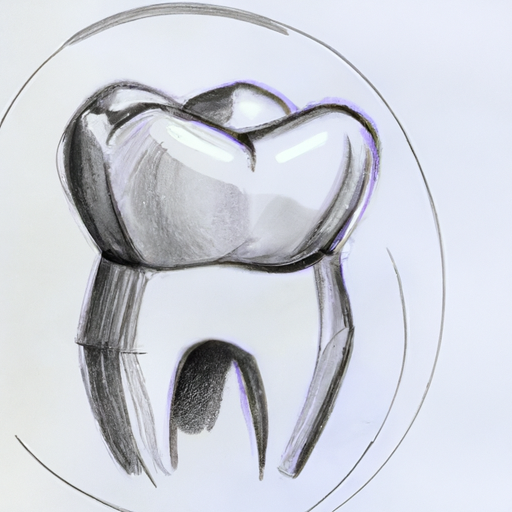In recent years, there has been a growing trend in dentistry towards the use of metal-free ceramics. This innovative material has revolutionized the field, offering numerous benefits and applications in dental diagnosis and treatment. Gone are the days when metal was the go-to option for dental restorations, as metal-free ceramics now provide a more aesthetically pleasing and biocompatible alternative. However, it is crucial to understand the symptoms and causes of metal allergies in dentistry, as some patients may still experience adverse reactions to certain materials. In this article, we will delve into the world of metal-free ceramics, exploring their advantages, uses, and the potential risks associated with metal allergies.
1. "The Growing Trend: Metal-Free Ceramics in Dentistry"
Over the years, there has been a growing trend in dentistry towards the use of metal-free ceramics. Dental ceramics are widely used in restorative dentistry for various applications, including crowns, bridges, veneers, and implants. Traditionally, these restorations have been made using metal alloys such as gold or titanium, but metal-free ceramics have gained popularity due to their numerous advantages.
One of the main reasons for the increasing popularity of metal-free ceramics is their aesthetic appeal. Metal restorations can sometimes create a grayish hue near the gum line, which can be quite noticeable and unaesthetic, especially in the anterior region. On the other hand, metal-free ceramics possess excellent translucency and can be color-matched to the patient’s natural teeth, resulting in highly aesthetic restorations that seamlessly blend in with the surrounding dentition.
Moreover, metal-free ceramics offer exceptional biocompatibility. Metal restorations may cause allergic reactions or sensitivities in some individuals, leading to discomfort and adverse tissue responses. In contrast, metal-free ceramics are hypoallergenic and biologically inert, making them suitable for patients with metal allergies or sensitivities. This biocompatibility also contributes to the longevity of the restorations, as they are less likely to cause inflammation or tissue irritation.
Another advantage of metal-free ceramics is their superior strength and durability. With advancements in ceramic materials and manufacturing techniques, today’s metal-free restorations can withstand the
2. "Benefits and Applications of Metal-Free Ceramics in Dental Diagnosis and Treatment"
Metal-free ceramics have emerged as a revolutionary alternative in dentistry, offering numerous benefits and applications in dental diagnosis and treatment. Unlike traditional metal-based restorations, metal-free ceramics are composed of biocompatible materials that closely resemble the natural tooth structure, providing patients with an aesthetically pleasing and long-lasting solution.
One of the key benefits of metal-free ceramics is their superior aesthetics. The translucent nature of these ceramics allows them to mimic the optical properties of natural teeth, resulting in restorations that seamlessly blend with the surrounding dentition. This is particularly important for restorations in the anterior region, where aesthetics play a vital role in achieving a pleasing smile. Metal-based restorations, on the other hand, often result in a metallic or grayish hue, which can be visually unappealing and compromise the patient’s self-confidence.
Furthermore, metal-free ceramics offer excellent biocompatibility. They are free from metals such as nickel, which can cause allergic reactions or sensitivity in some individuals. This makes them an ideal choice for patients with metal allergies or sensitivities, ensuring a comfortable and safe treatment experience. Additionally, metal-free ceramics are non-corrosive, eliminating the risk of metal ions being released into the oral cavity, which can lead to oral health complications and discoloration of surrounding tissues.
Another advantage of metal-free ceramics is their exceptional durability and longevity. These restorations have shown remarkable resistance to wear and fracture, making them suitable for
3. "Understanding the Symptoms and Causes of Metal Allergies in Dentistry"
Metal allergies in dentistry can pose significant challenges for both patients and dental professionals. Understanding the symptoms and causes of these allergies is crucial in order to diagnose and treat them effectively.
Symptoms of metal allergies in dentistry can vary from mild to severe and may manifest as localized or systemic reactions. Common symptoms include oral discomfort, such as soreness or burning sensation in the mouth, as well as redness and swelling of the gums. Patients may also experience metallic taste, ulcers, or blistering in the oral cavity. In some cases, allergic reactions can extend beyond the mouth and result in skin rashes, hives, or even difficulty breathing. It is important to note that these symptoms may not appear immediately after dental treatment but can develop over time as the immune system reacts to the metal.
The causes of metal allergies in dentistry are primarily attributed to the presence of various metals used in dental restorations and orthodontic appliances. Common allergenic metals include nickel, cobalt, and chromium, which are often found in alloys used for dental crowns, bridges, and dental implants. These metals can trigger an immune response in susceptible individuals, leading to allergic reactions. It is estimated that approximately 10-17% of the population has some degree of metal allergy, with nickel being the most common allergen.
The diagnosis of metal allergies in dentistry involves a thorough evaluation of the patient’s medical history, clinical examination, and sometimes additional testing. Patch
